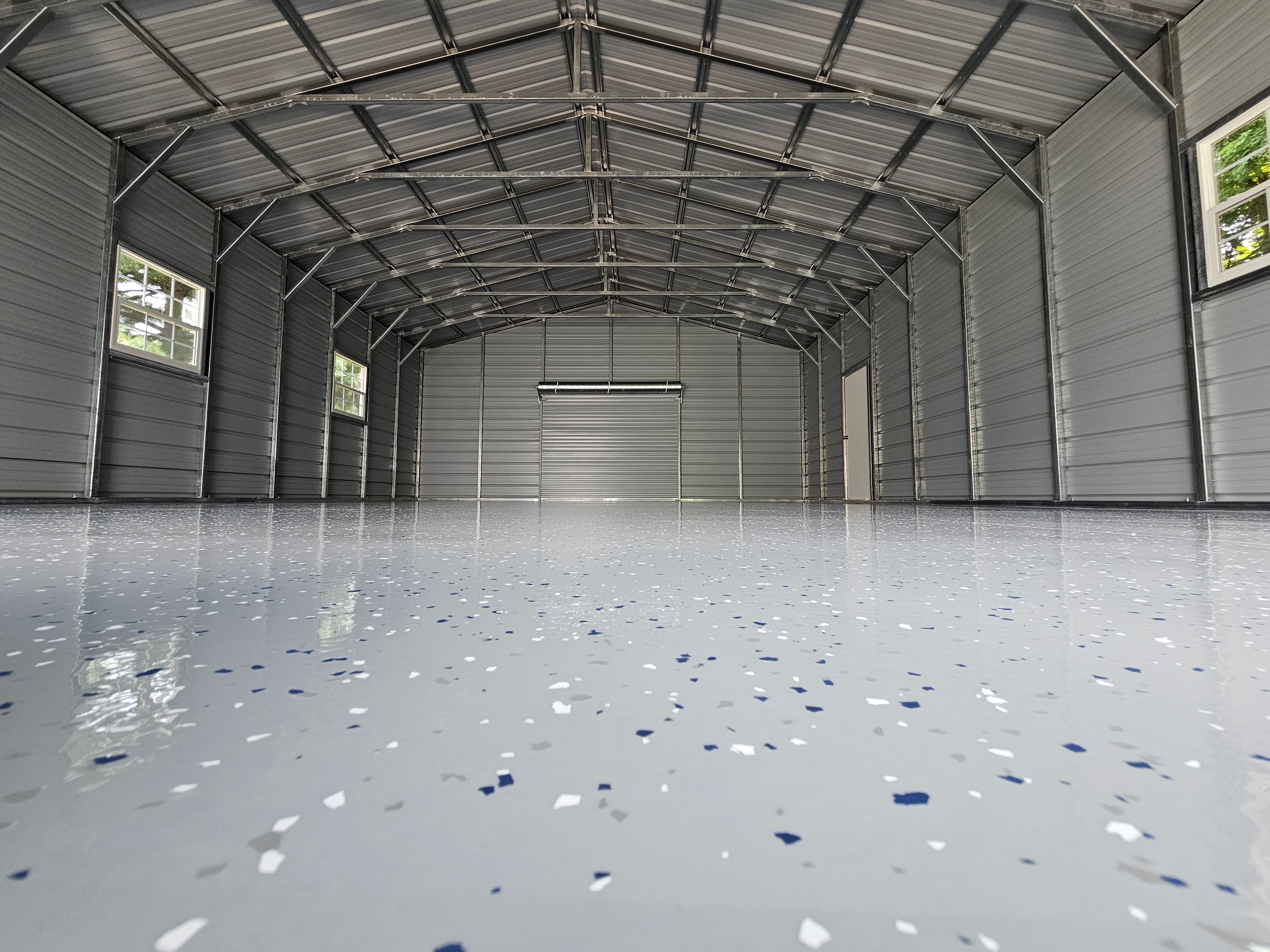Comparing Epoxy and Polyaspartic Garage Floors: Which is Right for You?
Understanding Epoxy and Polyaspartic Flooring
When it comes to upgrading your garage floor, two popular options are epoxy and polyaspartic coatings. Both provide a durable and attractive finish, but they each have unique characteristics that might make one more suitable for your needs than the other. Understanding these differences is essential in making an informed decision.

What is Epoxy Flooring?
Epoxy flooring is a resin-based coating that is applied to concrete floors to create a hard, durable surface. It is known for its strength, resistance to chemicals, and ability to withstand heavy traffic. Epoxy coatings are available in a variety of colors and finishes, allowing you to customize the look of your garage.
One of the advantages of epoxy is its affordability. It's typically less expensive than polyaspartic coatings, making it an attractive option for budget-conscious homeowners. However, it's important to note that epoxy can take several days to cure completely, which might be inconvenient if you need quick access to your garage.
Understanding Polyaspartic Flooring
Polyaspartic flooring is a type of polyurea coating that has been gaining popularity due to its fast curing time and impressive durability. This type of flooring can be applied in a wide range of temperatures, making it versatile and suitable for various climates.

One major advantage of polyaspartic coatings is their quick curing process. Unlike epoxy, which can take days to fully cure, polyaspartic floors can be ready for use within a few hours. This rapid turnaround makes it ideal for those who need their garage back in use as soon as possible.
Comparing Durability and Maintenance
Both epoxy and polyaspartic floors offer excellent durability, but polyaspartic has a slight edge in terms of chemical resistance and UV stability. This means that polyaspartic floors are less likely to yellow or fade when exposed to sunlight. Additionally, they are more flexible, which helps prevent cracking under heavy loads or temperature fluctuations.
When it comes to maintenance, both types of flooring are relatively low maintenance. Regular sweeping and occasional mopping will keep them looking their best. However, polyaspartic's superior resistance to staining makes it easier to clean and maintain over time.

Cost Considerations
The cost of installing epoxy or polyaspartic flooring can vary widely based on factors like the size of the garage and the specific product chosen. Generally, epoxy coatings are more budget-friendly upfront, but may require more frequent touch-ups or recoating over the years.
Polyaspartic coatings tend to be more expensive initially, but their longevity and reduced maintenance needs can offset the higher upfront costs over time. It's important to weigh these factors against your priorities and budget when choosing between the two.
Conclusion: Making Your Decision
When deciding between epoxy and polyaspartic garage flooring, consider your specific needs and preferences. If budget is a primary concern and you don't mind waiting for curing, epoxy might be the right choice for you. On the other hand, if you need a quick installation with long-lasting results and superior UV resistance, polyaspartic could be worth the investment.
Ultimately, both options can significantly enhance the look and functionality of your garage, providing a durable surface that withstands daily wear and tear. By understanding the key differences between them, you can make an informed decision that aligns with your goals and lifestyle.